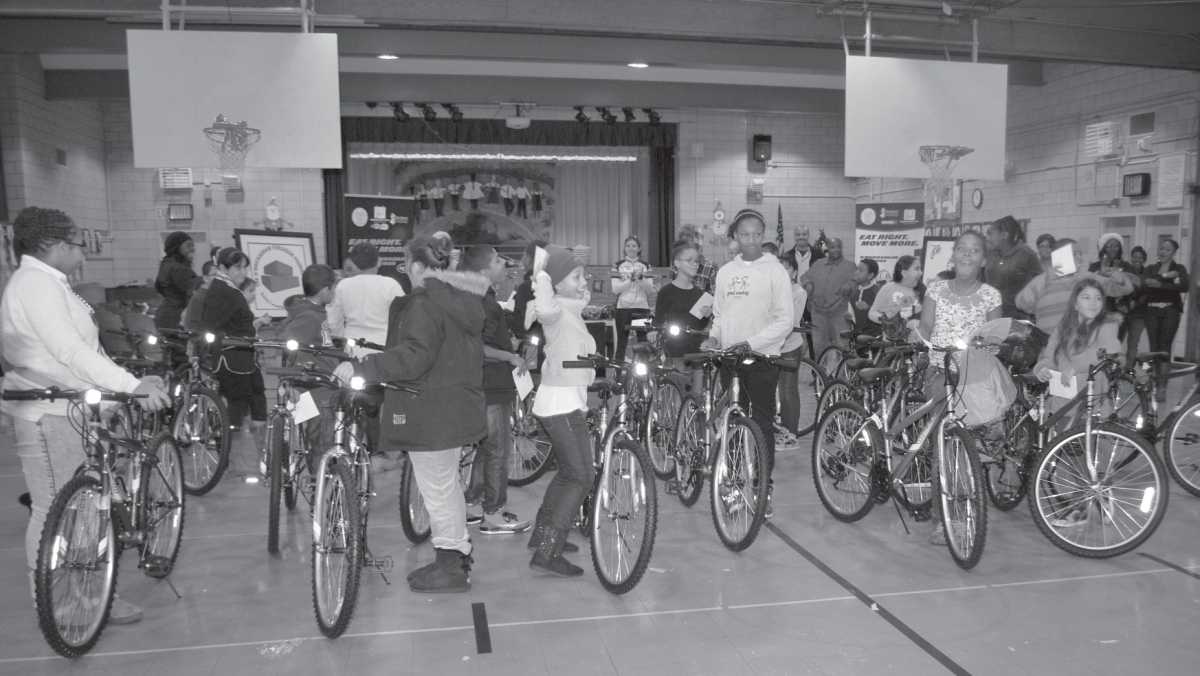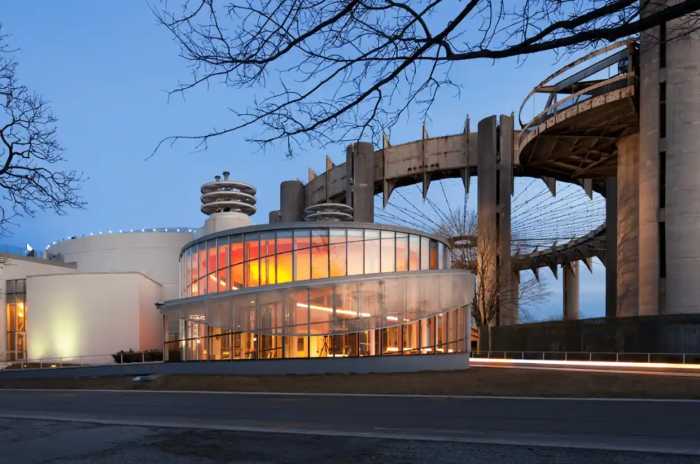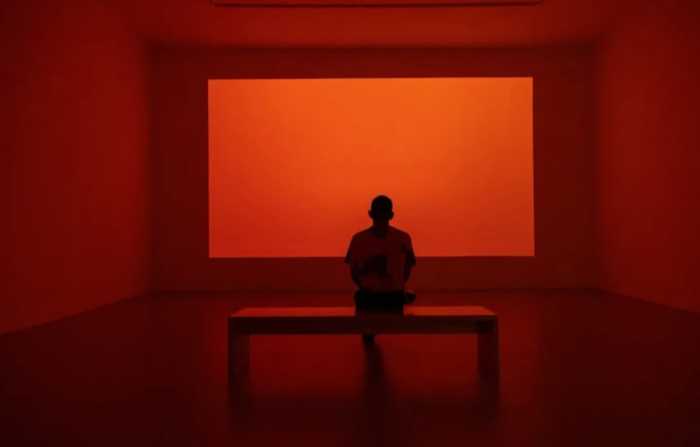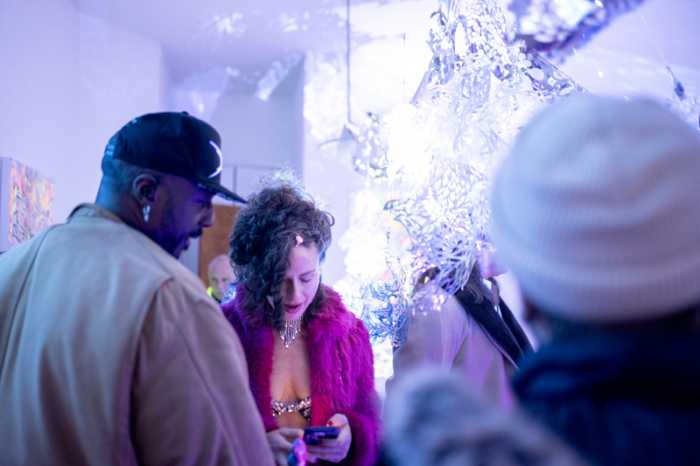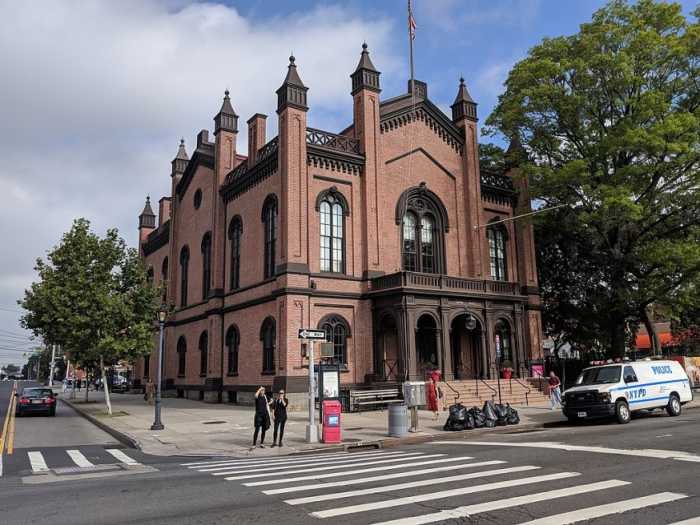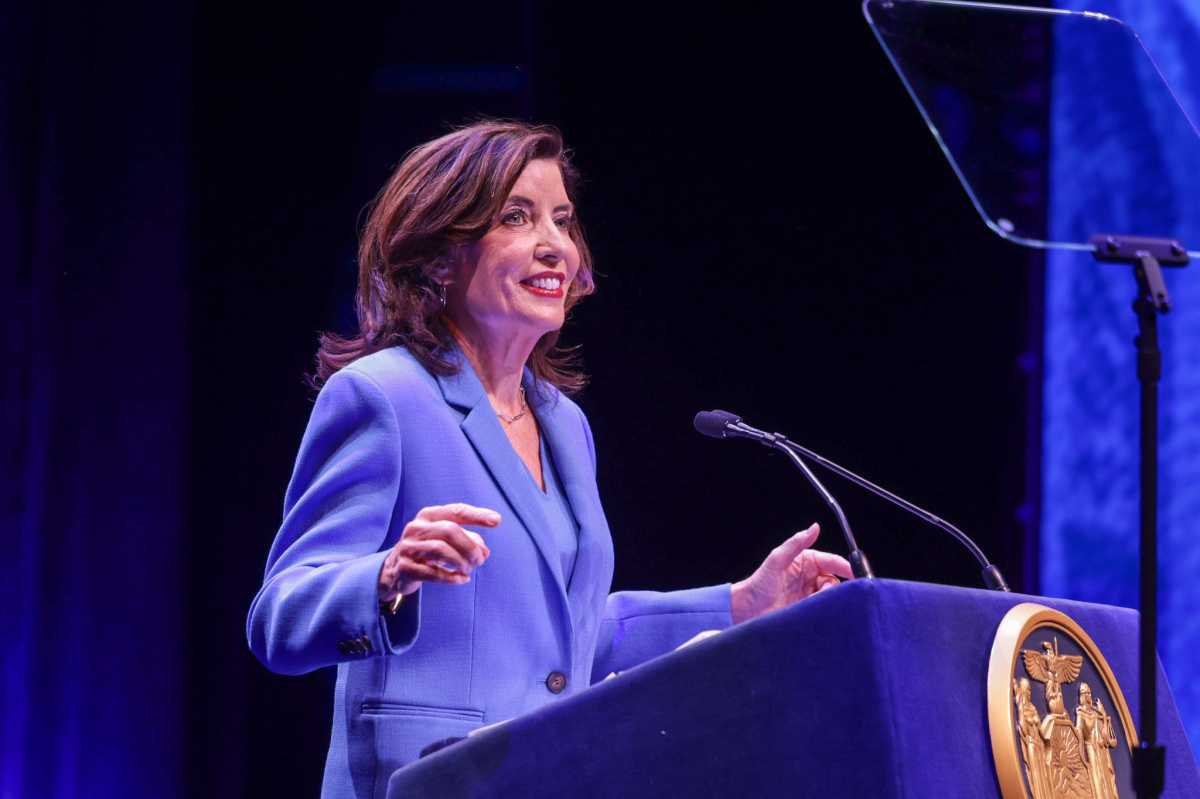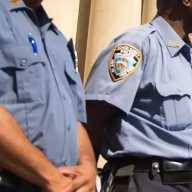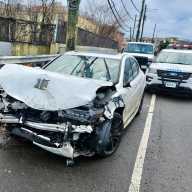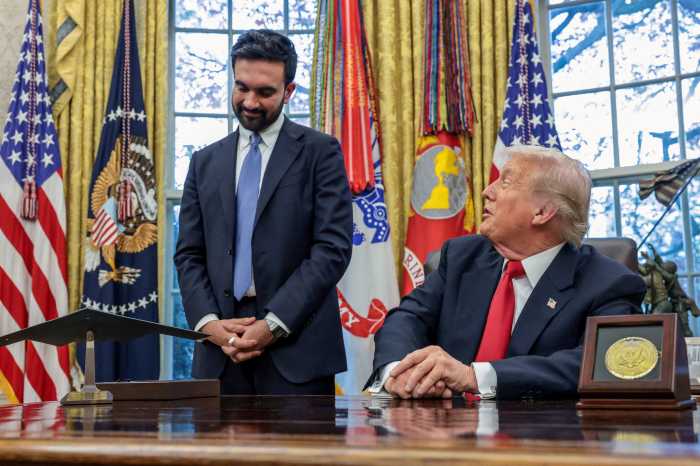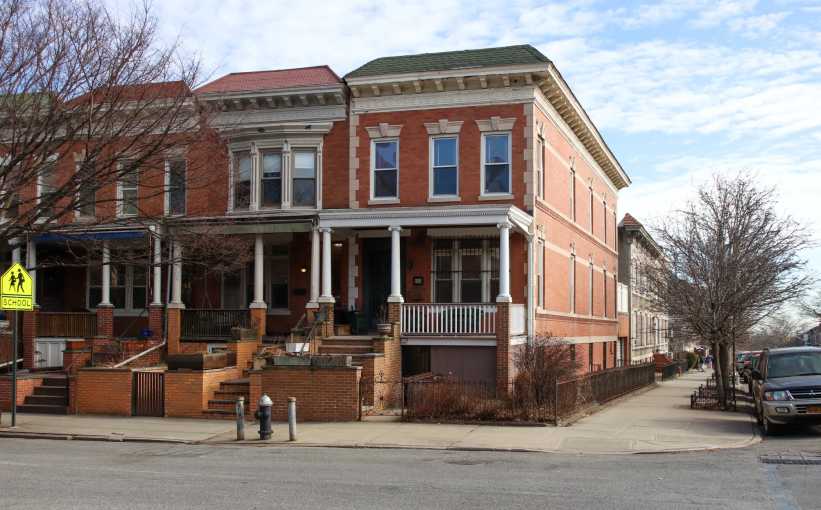Host Of Events To Mark Expositions’ 50th & 75th Anniversaries
When they opened decades ago this month, the 1939-40 and 1964-65 World’s Fairs—both of which held at what is now Flushing Meadows-Corona Park—offered to millions of visitors glimpses of the “world of tomorrow.”
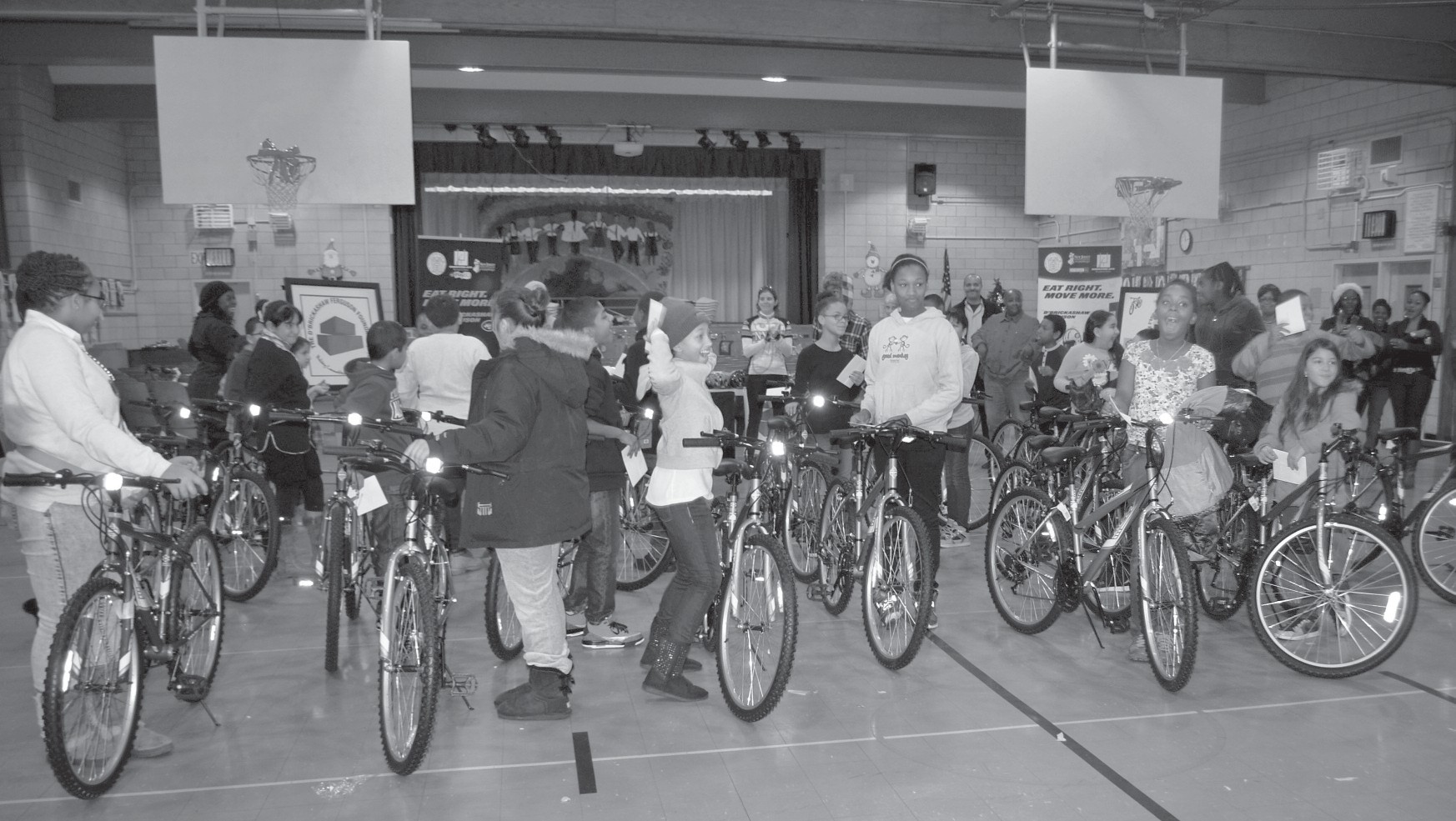
Beginning this month, Queens residents will get a glimpse of those world’s fairs of yesteryear as the borough marks the golden and diamond jubilees of the expositions in the months ahead.
During a press conference last Friday, Mar. 28, at the Unisphere— the iconic steel symbol of the 1964-65 fair—Queens Borough President Melinda Katz unveiled a six-month schedule of events commemorating the 50th anniversary of the most recent exposition and the 75th anniversary of the 1939-40 fair.
Katz, along with Assemblywoman Margaret Markey, are serving as co-chairs of the World’s Fair Anniversary Committee, an alliance of elected officials, agencies and organizations coordinating commemorations of the celebrated international exhibits which provided a universe of memories to its millions of visitors.
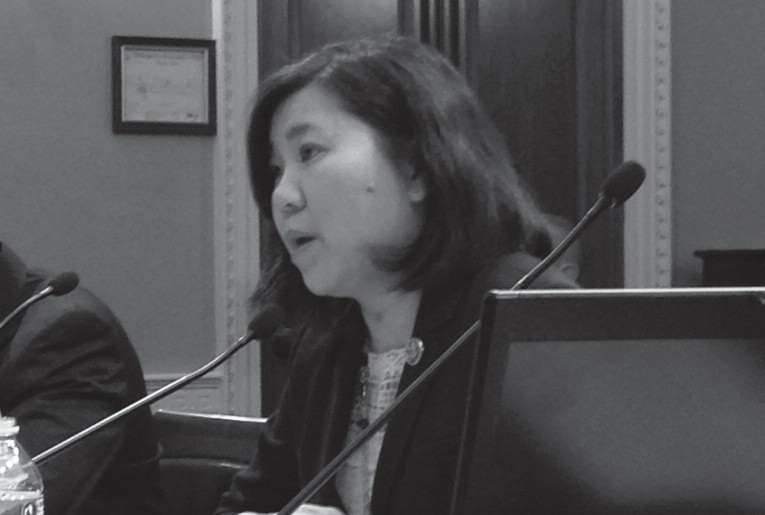
“Both the 1939 and 1964 World’s Fairs were seminal events that had wide impacts locally, nationally and internationally,” Katz said. “They also left favorable impressions upon, and generated positive memories for their attendees, and those impressions and memories have lasted until this day.”
The borough president expressed hope that the various programs commemorating both world’s fairs this year will “rekindle memories of the fairs among those who attended them and promote the spirit of the fairs among younger people who did not have a chance to attend.”
“The many Queens organizations and institutions that have come together under the borough president’s leadership to organize these events over the next six months demonstrate the ascendancy of Queens in recent years and reflect the important role of our great borough in the history of the city and nation,” Markey added.
But Katz pointed out the celebration of the two world’s fairs was not merely about marking history, but also continuing an effort to make Queens an attraction for visitors from around the world.
“These events will also help in the achievement of my goal to rebrand queens as a tourist destination with world-class cultural institutions and other attractions that people from around the borough, city, nation and world should explore,” she said.
The commemoration officially kicks off on Earth Day, Tuesday, Apr. 22, at 10:45 a.m., the exact moment when the 1964-65 World’s Fair opened. A brief ceremony will be held at that time outside the New York State Pavilion—the futuristic landmark featuring three spaceshiplike towers and the elliptical “Tent of Tomorrow.”
Following the ceremony, members of the public will get a chance to tour the pavilion, which has fallen into disrepair since closing five decades ago. The towers once held an observation deck and restaurants, and the Tent of Tomorrow featured a giant mosaic tile roadmap of New York State, now badly damaged by the elements of nature.
The brief opening of the pavilion is part of the borough president’s campaign to have the New York State Pavilion restored to some semblance of its former glory.
A larger celebration will take place on Sunday, May 18, when Flushing Meadows Park plays host to the World’s Fair Anniversary Festival. From 1 to 4 p.m., all are invited to tour exhibits of World’s Fair memorabilia and enjoy an assortment of food, rides and live entertainment.
These events and others are variously sponsored by the Queens Borough President’s office, New York Community Bank, the city Parks Department, NYC and Company, the Queens Tourism Council, the Queens Economic Development Corporation and other members of the World’s Fair Anniversary Committee, which include the Flushing Meadows Park Conservancy, Queens Theatre in the Park, the New York Hall of Science, the Queens Museum of Art, the Louis Armstrong House Museum, the Museum of the Moving Image, the New York Mets, the Noguchi Museum, the Port Authority of New York and New Jersey, the Queens Chamber of Commerce, the Queens Historical Society, Queens College and the United States Tennis Association.
Full details about other World’s Fair anniversary events can be found online at www.itsinqueens.com/worldsfair.
The fair that shaped Queens
Developed during the latter part of the Great Depression, the 1939-40 World’s Fair made an indelible mark on Queens in many physical ways. Master builder Robert Moses, then the city’s parks commissioner, had the fairgrounds developed on a former ash dump, with a long-term plan to transform it into Flushing Meadows Park with revenue generated from the exposition.
Subway lines were altered and/or expanded specifically to bring millions of visitors to and from the fair each day. A World’s Fair station (now known as Mets-Willets Point) was built on the elevated 7 line above Roosevelt Avenue. A World’s Fair IND line was also built from Forest Hills to the fairgrounds along what is now the Van Wyck Expressway; it was later demolished.
The fair finally opened on Apr. 30, 1939, with an opening attended by President Franklin D. Roosevelt. His address was televised by NBC to about 200 television sets in the New York City area, making it the first scheduled televised event in the nation’s history.
The television—which would transform global communications in the decades ahead—was one part of the “world of tomorrow” which visitors got a chance to see at the 1939-40 fair. Spectators viewed exhibits of items now commonplace in modern society, including nylon, fluorescent lamps, color photography and air conditioning units.
At the heart of the fairgrounds stood the event’s two titanic symbols: the Trylon, a 610’-tall white spire; and the Perisphere, a giant white sphere within which housed “Democracity,” a giant diorama offering visitors a glimpse of a utopian “city of tomorrow.”
By the time it closed in October 1940, more than 44 million visitors had gone through the fair’s turnstiles—but the world itself had fallen into global conflict. One stark reminder of that was at the fair itself, in which the pavilions of Poland and Czechoslovakia were closed in 1940 after both nations were invaded by Nazi Germany, which did not participate due to what it claimed were financial reasons.
The United States entered World War II in December 1941, and the Trylon and Perisphere were demolished so its materials could be used for the war effort. Meanwhile, the fairgrounds became Flushing Meadows Park, but the resources were not available for its full development.
The fair of the future
Nearly 20 years after World War II ended, the 1964-65 World’s Fair opened with the theme “Peace Through Understanding.” Much like the 1939-40 fair, the second edition offered millions of visitors a glimpse into a vibrant and technologicallyadvanced future.
Moses, again, hoped that revenue from the second World’s Fair at Flushing Meadows would be enough to complete the park he had started there. Revenue fell short of projections, but the fair still drew more than 51 million visitors in its two seasons and became particularly beloved by Baby Boomers.
Corporate giants played a heavy role in the 1964-65 fair, displaying modern marvels at their pavilions, many of which showcased the use of computers to visitors. The iPhone and high speed Internet were decades from being conceived, but The Bell System had on display at the fair a videophone and a computer modem.
One of the fair’s main attractions was “Pepsi Presents Disney’s It’s a Small World,” the famous animatronic ride with the very catchy tune created by Walt Disney. After the fair concluded, Disney moved the attraction to Disneyland in California; a replica was built at Walt Disney World in Orlando, Fla., where it continues to thrill millions of visitors every year.
After the fair concluded in October 1965, the fairgrounds reverted back to Flushing Meadows Park—but a number of its features remain.
Along with the Unisphere and the New York State Pavilion, other remnants include the New York Hall of Science and its adjacent Space Park and the former Port Authority pavilion and heliport (now Terrace on the Park restaurant).
The Queens Museum of Art, formerly the New York City Pavilion, is the only remaining structure which was part of both world’s fairs. Following World War II, the pavilion was used as the temporary headquarters of the United Nations General Assembly, hosting it from 1946 through 1951.
Two relics of the 1939-40 and 1964-65 fairs lie below Flushing Meadows Park—and won’t be visible for another few thousand years. Time capsules were interred by the Westinghouse company at two locations during each of the fairs; both are not to be opened until 6939, approximately 5000 years after the opening of the 1939-40 fair.
The 1939-40 time capsule includes papers from Albert Einstein, copies of Life magazine, a safety razor, a kewpie doll, plant seeds and microfilm containing millions of pages of text. Contents of the 1964- 65 capsule include an electric toothbrush, a 50-star American flag, an audio record and a World’s Fair guidebook.
Correction: An earlier version misstated that the “It’s a Small World” ride was relocated to Walt Disney World in Orlando, Fla. The ride was relocated following the 1964-65 fair to Disneyland in California; a replica was later built at Walt Disney World’s Magic Kingdom.

